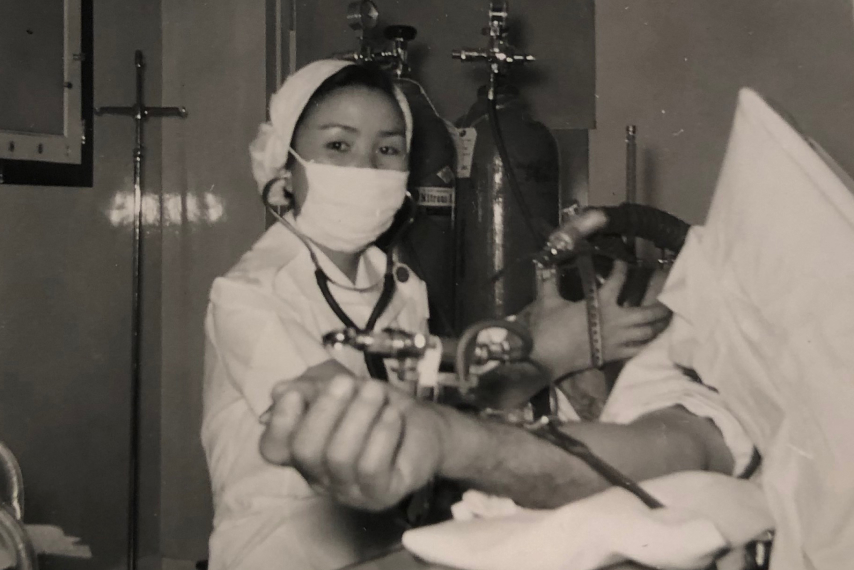Medical Advocacy as Art
When being a Caregiver is a lifelong dedicated career
My mother was Clara Kawahara Norman, a dedicated healthcare practitioner and humanitarian. Originally from a tiny village in Hawaii, Clara was a Nurse Anesthetist for fifty years. She worked in rural communities for the majority of her career. She was still actively practicing medicine as an independent Anesthetist RN, serving some of the last small community hospitals with surgical units in Northern California in her seventies.
Inspired by the story of Operation HOPE and their hospital ship, SS Hope (1958-1974), Clara dreamed of volunteering with a medical humanitarian organization. She made several arduous trips from California to an isolated surgical clinic in the mountains of Guatemala in her late sixties, providing anesthesia to hundreds of patients, over several trips. Staffed by volunteer doctors and nurses, the charity provided surgical interventions for cleft lip and palate, burns, corrective orthopedics and other conditions. Preceding each trip, she solicited critical medical supply donations for use in the clinic. By her second trip, she was also transporting clothing and toys to offer dignity and comfort to the families she served.

Clara Kawahara at the beginning of career learning the art of Anesthesia
At the time that my mother was living her dream, I was a young adult, feeling my own urges to contribute to the greater good. I enjoyed listening to her happy recollections of the diverse groups of people who traveled far to treat people living in poverty. They worked long hours, ate together, slept a little, and started again, day after day. Clara said that they really enjoyed themselves, doing that difficult work. Her photographs of those trips show gratified smiles of the local people who worked at the clinic and the medical team members who worked together to provide surgical treatment for as many patients as they could.
Clara did her training at Harvard Medical School and Brigham & Women’s Hospital with Dr Leroy VanDam, her life long mentor. She was lucky enough to be part of the surgical team that carried out the first successful kidney transplant in 1953. When my mother was dying in October 2021, one of the nurses said, “Thank you Clara, from the hundreds of patients you took care of.” She was 95.
Like my mother, Paul Farmer MD was associated with Brigham & Women’s and Harvard. Dr. Farmer was a medical humanitarian who, with colleagues founded Partners in Health (PIH), brought compassionate medicine and “accompaniment” into under-resourced communities with great success. Watch the documentary film Bending the Arc to witness PIH’s mission in action: “to bring the benefits of modern medical science to those most in need of them and to serve as an antidote to despair.”
Dr. Farmer died suddenly in 2022, aged 62, while teaching at the medical school he co-founded in Rwanda. What might he have accomplished with another thirty years of life?
It is brilliant when medical professionals venture outside the typical clinical setting and model advocacy for all. We can advocate for ourselves as patients and caregivers when confronting the healthcare system simply by asking for good care. We might be surprised by the response to the question, “What would you recommend for someone whom you love?”
Thanks for reading,
Leilani
Share on Instagram
Share on Linkedin

LEILANI NORMAN Leilani Norman is Co-Founder at Caring is Art, a wellbeing and elder care advisor, former family caregiver, and entrepreneur.